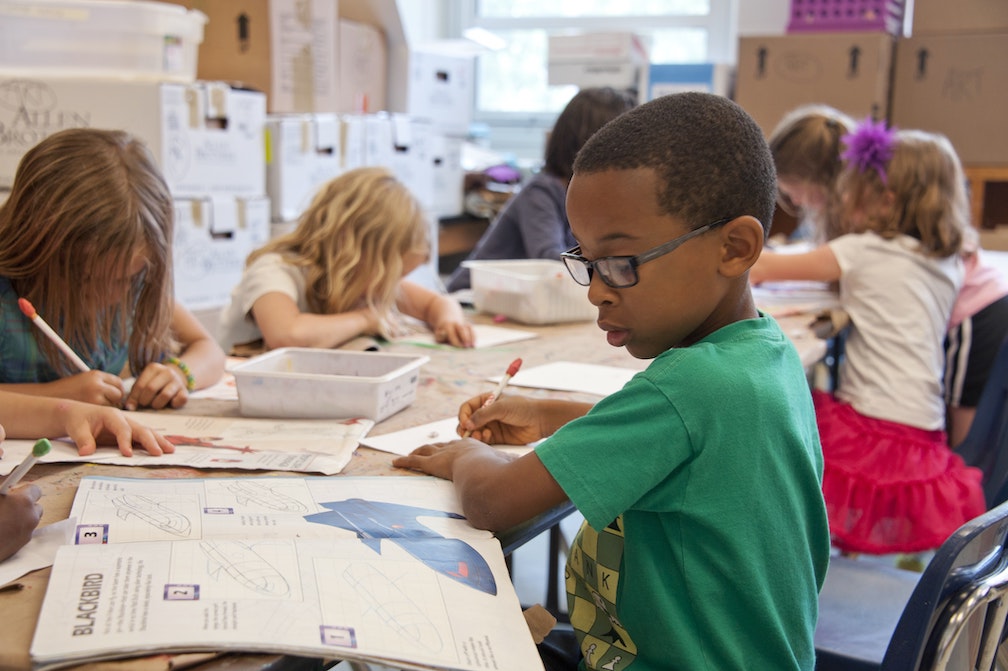Naplan shows progress in our students but decrease in numeracy

The 2022 NAPLAN National Report has been released, with results mostly stable at a national level from 2021 to 2022, apart from a decrease in Year 5 numeracy and Year 9 spelling.
“Overall, for a second year in a row, the national level results have defied predictions of drastic falls in performance related to COVID,” ACARA CEO, David de Carvalho, said.
When looking at average scores, most long-term trends since 2008 either show steady progress, particularly in primary years, or are stable. The exception is Year 9 spelling, where increases in the early years of NAPLAN are reversing.
Over the long term, writing results – which, as recently reported, had been in decline up to 2018 – are turning around, showing an upward trend for Years 5, 7 and 9 since 2019. “This suggests that the efforts being made by schools and teachers, in response to those earlier warning signs, are paying off,” Mr de Carvalho said.
Despite the decline this year in Year 5 numeracy, the long-term trend is positive. Steady rises in Years 3 and 5 reading, and Years 3, 5 and 7 spelling have also continued.
“Aside from numeracy, the Year 5 results are pleasing as 2022 was the first year this cohort sat their NAPLAN tests, following the cancellation of NAPLAN in 2020. It will be important to track whether this cohort’s lower numeracy achievement affects their results in Years 7 and 9.
“In the year-to-year data from 2021 to 2022, an increase in writing results for Year 9 Indigenous students and students from a language background other than English are welcome. There was also an increase in grammar and punctuation results for Indigenous students in Year 7,” Mr de Carvalho said. “While these results are just for one year, it’s hoped this signals the start of longer-term trends.”
When looking at the National Minimum Standard (NMS), the percentage of Year 9 boys achieving the NMS in reading has fallen to its lowest level, below 90 per cent, with 13.5 per cent not achieving the NMS this year, compared to fewer than 8.5 per cent in 2008. “It is certainly concerning that we have so many students who are not demonstrating the capacity to read at this basic level only a few years before they leave school,” Mr de Carvalho said.
Preliminary NAPLAN 2022 results were not released in August, as they have been in previous years, as closer analysis of the data was required due to lower than usual participation rates.
Participation rates have been slowly falling since the start of NAPLAN; however, the decline this year was greater than the long-term rate. “This issue is of concern, as low participation rates can impact results analysis and the ability to get a clear picture of literacy and numeracy achievement at the national level,” Mr de Carvalho said.
Of the 4.7 million NAPLAN tests sat by students, there was a total of 48 substantiated aggregated incidents in 2022, of which one was cheating, 8 were security breaches and 39 were “general breaches”. There were 65 substantiated aggregated incidents in 2021 and 88 in 2019. The number of reported test incidents is extremely small.
The NAPLAN National Report provides nationally comparable data on the 2022 national and state/territory results for each test domain and year level assessed, and for each level by gender, Indigenous status and language background other than English.
NAPLAN was successfully undertaken in schools across the country and this was the first year all schools took the test online. A record 4.3 million online tests were submitted by more than 1.2 million students in 9,315 campuses and schools across Australia. This year’s NAPLAN coincided with the peak impact of the COVID isolation requirements in some states/territories.
NAPLAN NATIONAL REPORT 2022 – KEY FINDINGS
National long-term trends
Over the long term since 2008 (2011 for writing), the national results show:
- Writing results in Years 5, 7 and 9 continue to trend upwards, building on the reversal of the downward trend and flattening of the curve first seen in 2018.
- Spelling results for Years 3, 5 and 7 are steadily trending upwards.
- Years 3 and 5 results have seen a steady upward trend in reading.
- Year 5 results have seen an upward trend in numeracy.
- Grammar and punctuation results are stable in all years.
The long-term trends by student background show:
Gender
- Female students’ average achievement in numeracy was increasing in past assessment years but has begun to flatten, while a steadily positive trend continues in Year 7.
- There has been no change in spelling for Years 3, 7 and 9 female students.
- Male students have improved steadily in Year 3 grammar and punctuation.
Indigeneity
- Years 3 and 5 Indigenous students show steady improvement in writing.
- Indigenous students’ results show a positive but flattening trend in Year 3 spelling and a steadily positive trend in Year 9 spelling.
- Year 5 Indigenous students’ results increased steadily in grammar and punctuation.
- Year 9 Indigenous students’ results show a steadily positive trend in numeracy.
- Non-Indigenous students have improved steadily in Year 3 grammar and punctuation, and their results show a steadily positive trend in Year 7 numeracy.
Language background other than English (LBOTE)
- There is a steadily positive trend in Years 7 and 9 reading for LBOTE students.
- There is a steadily positive trend in Years 3, 5 and 7 grammar and punctuation for LBOTE students.
- LBOTE students showed a steadily positive trend in Years 3 and 7 numeracy; however, the achievement of LBOTE students in Year 9 numeracy decreased in recent assessment years after an increase in early NAPLAN years.
- Year 3 LBOTE students improved steadily in writing.
- Students who only speak English at home have not changed in achievement in
Years 7 and 9 spelling.
Results for 2022 compared with 2021
At a national level, when compared with 2021:
- Year 5 students declined in numeracy.
- Year 9 students declined in spelling.
By student background, when compared with 2021:
Gender
- Female students declined in Year 5 numeracy and Year 9 spelling.
- Male students declined in Years 5, 7 and 9 numeracy, and Year 5 grammar and punctuation.
Indigeneity
- Year 9 Indigenous students’ results showed a substantial improvement in writing.
- Year 7 Indigenous students’ results improved in grammar and punctuation.
- Year 7 Indigenous students’ results declined in spelling.
Language background other than English (LBOTE)
- Year 5 numeracy results declined for LBOTE students.
- Year 9 writing results improved for LBOTE students.
- Years 5, 7 and 9 students who only speak English at home declined in numeracy.
- Year 9 students who only speak English at home declined in spelling.
- Year 5 students who only speak English at home declined in grammar and punctuation.













